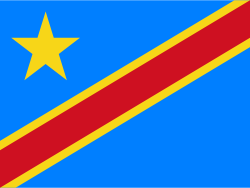UNICEF Reports Alarming Rise in Child Rape Cases in the Democratic Republic of Congo
 Congo, Democratic Republic
Congo, Democratic RepublicThe United Nations has raised alarms about the escalating conflict in the eastern Democratic Republic of the Congo (DRC), where the M23 rebel group is making significant advances towards Goma, the region's largest city. In a statement issued by UN Secretary-General António Guterres, it was reported that more than 178,000 people have been displaced as fighting intensifies between M23 and the Congolese armed forces.
Recent weeks have seen M23 capture key locations, including the towns of Minova and Sake, which are vital trade hubs near Goma. The rebel group's offensive has resulted in an increasing number of civilian casualties and injuries, with reports of heavy shelling and explosions prompting mass evacuations. Survivors recount harrowing experiences, with some fleeing by boat across Lake Kivu, packed with belongings and family members seeking safety.
Decades of conflict in the DRC have led to one of the world's largest humanitarian crises, with over 6 million deaths and more than 7 million people internally displaced. Accusations against neighboring Rwanda for providing support to M23 have surfaced, although Rwanda has contested these claims. The UN has noted that M23 consists of approximately 8,000 fighters and controls crucial mineral resources, further complicating an already volatile situation.
Guterres has urged all parties in the conflict to respect DRC's sovereignty and cease support for armed groups, aiming to prevent a further escalation in violence that could destabilize the region.
 Congo, Democratic Republic
Congo, Democratic Republic Congo, Democratic Republic
Congo, Democratic Republic Congo, Democratic Republic
Congo, Democratic Republic